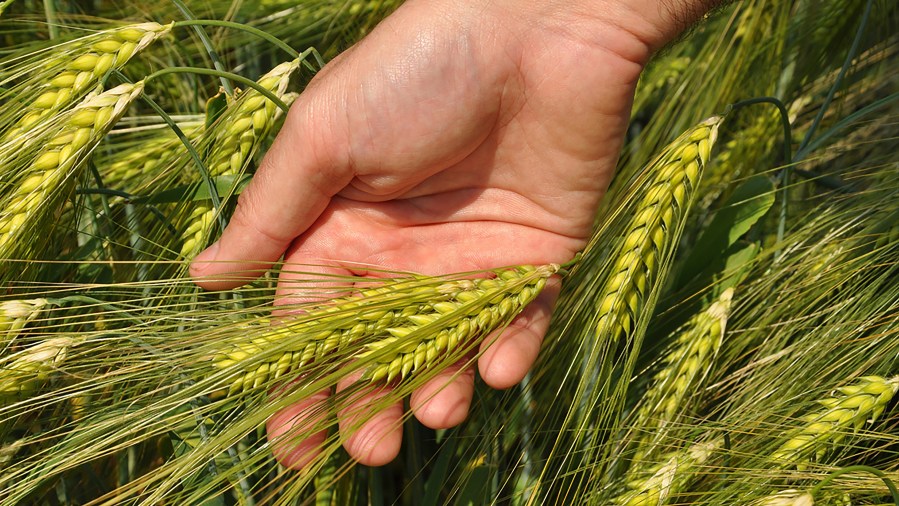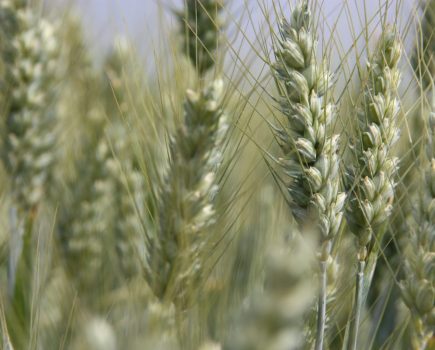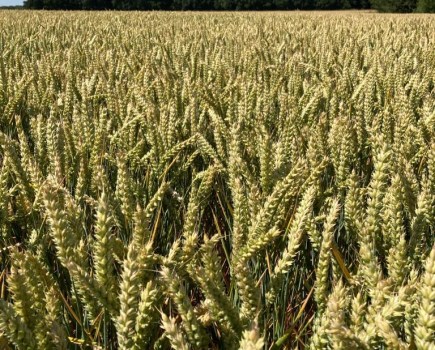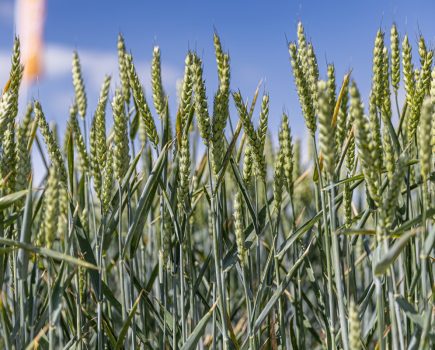During a season where the fortune of oilseed rape has the potential do a complete 180, plus uncertainties regarding SFI, could the agronomic benefits of hybrid barley suddenly come into their own? CPM speaks to advocates of the crop to find out more.
“Growing hybrid barley is an agronomic decision because it contributes so much to the wider rotation.” LEE HARKER
By Janine Adamson
Although this season’s crop of oilseed rape isn’t fully over the line just yet, a solid performance could be just what’s required to shift grower attention back to this valuable break option. However with this comes wider rotational challenges, namely selecting an appropriate entry crop to facilitate OSR’s early drilling window.
According to ProCam’s seed manager, Lee Harker, this could mean it’s time for barley to take the spotlight – a crop which has suffered by proxy as a result of the UK’s declining OSR area. “One good year is unlikely to instill complete trust in OSR, but with a promising crop in the ground we may find a steady increase in plantings next season onwards.
“Of course this means growers require the flexibility of an earlier preceding harvest. Coupled with the uncertainties surrounding SFI in the rotation, the obvious contender is barley,” he believes.
A self-confessed advocate of the crop, Lee says barley has a valuable place, even more so if it’s a hybrid variety. He says this viewpoint is based on its technical merits. “Growing hybrid barley is an agronomic decision because it contributes so much to the wider rotation whether that’s grassweed suppression, being a good entry for OSR, or providing an additional income from straw,” he adds.
But what is it about hybrid barley that enthuses the experts so much? Syngenta’s Ben Urquhart says many of the crop’s benefits are a result of heterosis, also known as hybrid vigour. “This is where the progeny of two genetically dissimilar parents exhibits increased biological function, compared with each parent.
“In many cases this produces a yield advantage which can be attributed to factors such as greater plant resilience and disease resistance, and increased above and below ground biomass,” he explains.
This is particularly valuable given the UK appears to have a ‘new normal’ when it comes to weather patterns, says Lee. “Hybrid vigour enables the crop to better withstand variability, whether that’s a wet autumn or a dry spring.
“Because hybrid barley develops a bigger root mass than conventional barley, plants scavenge for both water and nutrients more effectively. The crop is in a better position to handle those extremes and bounce back from adversity.”
Another important factor for Lee this season is the performance of hybrid barley in high grassweed pressure scenarios, given growers may be on the back-foot following consecutive years of poor control. He adds that with the future unknown for certain herbicide active ingredients, implementing an integrated approach will be critical.
“Particularly if you compare with a second wheat, for example, hybrid barley is much more effective at smothering grassweeds – not just blackgrass – and therefore offers a level of suppression.”
Ben confirms: “As well as being highly competitive compared with conventional barley and wheat, research indicates surviving grassweeds post-hybrid barley are often smaller and reduced in viability. So you’re almost achieving a double hit of suppression,” he suggests.
This trait is something Syngenta actively prioritises when screening new varieties, highlights Ben, as was the case when bringing six-row hybrid SY Canyon to the market. “Our aim has been to select the most competitive varieties, whether that’s above or below ground.
“Equally, we’ve made a conscious effort to overcome what’s been coined hybrid barley’s Achille’s heel – specific weight. Canyon bucks this trend, delivering the highest specific weight (71.1kg/hl) for a six-row variety on the AHDB Recommended List for winter barley 2025/26.”
In fact, Canyon’s specific weight is in the top three of all winter barley varieties on the RL across the three groups, he adds. And contrary to hybrid barley of the past where high specific weight often didn’t translate to yield, and vice versa, Canyon offers both.
“Having combined both high yield (91 untreated) and good specific weight in one variety is a particularly attractive combination,” states Ben.
Lee says he’s been impressed with the variety so far since it joined the RL in 2022. “Canyon’s specific weight definitely has appeal, particularly for mixed farmers who are farm-saving seed – a bold grain is attractive in those instances.
“In the past there was a belief that hybrid barley grain was poor, but that’s certainly no longer the case. And because Canyon offers a high yield too, this mostly covers the additional seed cost which comes with selecting a hybrid variety.”
Canyon’s other features include scoring a 7 for both mildew and rhynchosporium, a 6 for brown rust, and a 5 for net blotch. It’s also a relatively tall variety, offering an average straw length of 116cm without PGR and 108cm with PGR.
With barley straw highly desirable, particularly for those operating mixed systems, Lee says this should be factored into crop margins.
As for being an entry for OSR in the rotation, Canyon is early maturing (-1) which also means growers may benefit from spreading their on-farm workload. Whereas being a hybrid variety, it can be easily harvested as wholecrop for added market flexibility, highlights Lee.
Ben agrees that this is a valid point. “We’re seeing an increase in growers wholecropping hybrid barley for the biogas market because in many ways, it’s in a similar league to hybrid rye, while offering a viable alternative to maize.”
One grower who’s remained committed to hybrid barley for the past 10 years or so is Darlington-based William Maughan. Operating a 200ha mixed system including 30,000 free-range hens, 200 beef cattle and a cereal-based cropping rotation, he says unlike his wheat yields which have plateaued lately, the farm’s winter barley is on an upward trajectory.
“During our time growing hybrid barley, we’ve taken advice on-board regarding the importance of early nutrition and I believe that’s helped us to boost the yields, alongside careful variety selection,” he continues.
Being a mixed system, the main purpose of the farm’s cropping is to meet the forage requirements of the cattle. “We harvest hybrid barley using a mix of three techniques: wholecropping headlands, crimping the centres of fields at high moisture before rolling and clamping, and then some dry rolling.
“We also choose to grow a combination of 2-row and 6-row varieties, adopting a 50:50 split between the two,” adds William.
The reason behind these management decisions is two-fold – namely to produce optimum forage, but to also reap the agronomic benefits of hybrid barley. “Although we’re a mostly clean farm in terms of grassweed pressure, where we do have a problem, I find the 6-row varieties are excellent at smothering weeds including volunteer wheat. They also seem the best for crimping and clamping.
“Whereas 2-rows produce big and bold grain plus are more suitable for land which is particularly fertile to avoid lodging risk,” he explains.
Like many farmers, William is conscious that the 6-row varieties of the past were often criticised for smaller grain, therefore he takes time to scrutinise aspects such as specific weight. He says his recent choices have been Canyon and also KWS Inys, both selected for their bold grain size.
This article was taken from the latest issue of CPM. Read the article in full here.
For more articles like this, subscribe here.
Sign up for Crop Production Magazine’s FREE e-newsletter here.




